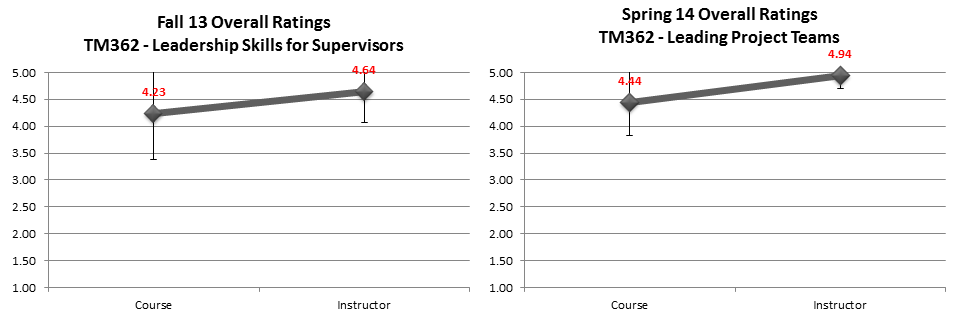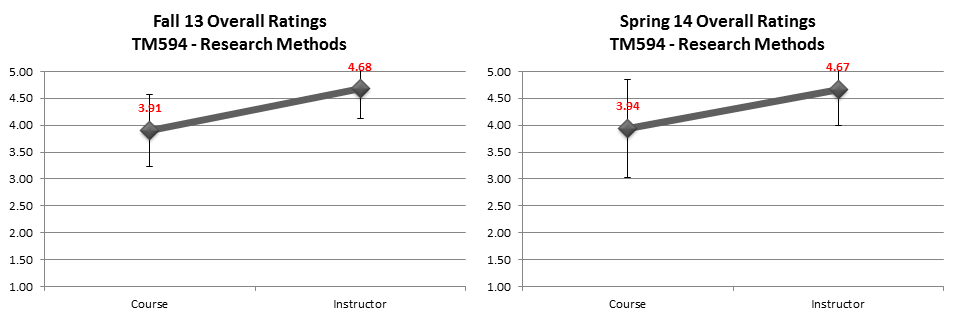Do students have a right to know the results of student course evaluation surveys? I think they do, and we should give them as much information as possible. Making student course evaluation data publicly available is controversial, for reasons ranging from misleading student feedback, to privacy laws (pertaining HR records), to reducing academic rigor, and the consumerization of higher education. The article, “Students Push for More Access to Course-Evaluation Data,” (CHE, 30 April 2014, subscription required), presents the issue from students’ perspective, while faculty’s perspective is represented in comments posted in response to the article.
Fundamentally, transparency in student course evaluation data has the major potential benefit of pushing faculty to improve their teaching. Lean Teaching documents dozens of common teaching errors, many of which go uncorrected for decades. The need for improvement could not be clearer. My sense is that much of the push-back from faculty is because they they know they make lots of teaching errors, but do not know how to correct them – and which is why they should adopt the Lean Teaching pedagogy.
In addition, teaching is often valued less than research in faculty performance evaluations by peers and administrators. A faculty member’s name in a given field of study is made by research, not by teaching. So, making course evaluations public is seen by faculty as creating many more problems than it eliminates.
I have always taken student feedback seriously and I know it has helped me improve my teaching. Student feedback is an integral part of Lean teaching because it supports the two principles of Lean management: “Continuous Improvement” and “Respect for People.” If a teacher is serious about improving their teaching, then transparency will surely help. It will not be problem-free, but I am certain that problems can be corrected to help assure better outcomes for both student and teacher.
I have no problem making my student course evaluation data publicly available. My long-term (approximately 10 year) average teaching evaluation scores for all courses taught are (1-5 scale):
- Overall quality of course are 4.43 (standard deviation of 0.56)
- Overall quality of instruction are 4.57 (standard deviation of 0.43)
Below are the results of student evaluations for the courses I taught in the two most recent semesters, Fall 2013 and Spring 2014 (1-5 scale):
The data for TM362 represents two different courses due to a recent change in our undergraduate program. The new course (right side) seems to be off to a good start, though I plan to make many changes, based on student feedback and my own ideas for improvement, to make it even better.
This is a signature graduate course of mine on Lean leadership, with no parallel in any other university. Student evaluation scores have been consistently as shown for nearly 12 years, despite the course being significantly different now than when it was first taught.
This is another signature graduate course of mine, again with no parallel in any other university. Students learn how to do formal failure analysis of management decisions using the A4 failure analysis method I created. The perfect score on the right is the first time that has ever happened to me. It is an anomaly. The left-hand image is a better representation of course ratings.
The graduate Research Methods course is a challenging one to teach because it combines two distinctly different audiences (Construction Management and Technology Management students), neither of whom think this required course should be in their degree programs. We are in the process of eliminating this course as a required course (for the Technology Management MS) on the basis that master’s degrees with practical orientations do not require a research methods course according to NEASC accreditation standards.
As the above images show, the score for courses is always lower than the score for instructor. I attribute this to the variation in students’ level of interest in the subject matter, while at the same time recognizing that I do good work given that limitation. Overall, the Lean Teaching pedagogy has helped consistently deliver top 10 percent course and instructor ratings over more than 15 years of teaching. The thousands of large and small improvements that I have made to my courses over time, both during and between semester, yields consistently favorable course evaluations and student learning outcomes.
I believe that my approach to teaching process improvement yields a 10 to 25 percent or more increase in average scores, and results in greater consistency within a course and across all courses taught. My scores are pretty good, but the challenge is to continuously improve. I believe that average scores of 4.7 to 4.8 are consistently achievable for all courses that a professor teaches (assuming they teach only courses that are closely aligned with their knowledge areas).
In summary, I hope that seeing my student course evaluation scores inspire you to adopt the Lean Teaching pedagogy. Once again, I refer you to Lean Teaching for complete details. You can download it for free if you are a member of Amazon Prime. As always, feel free to contact me if you have questions.




